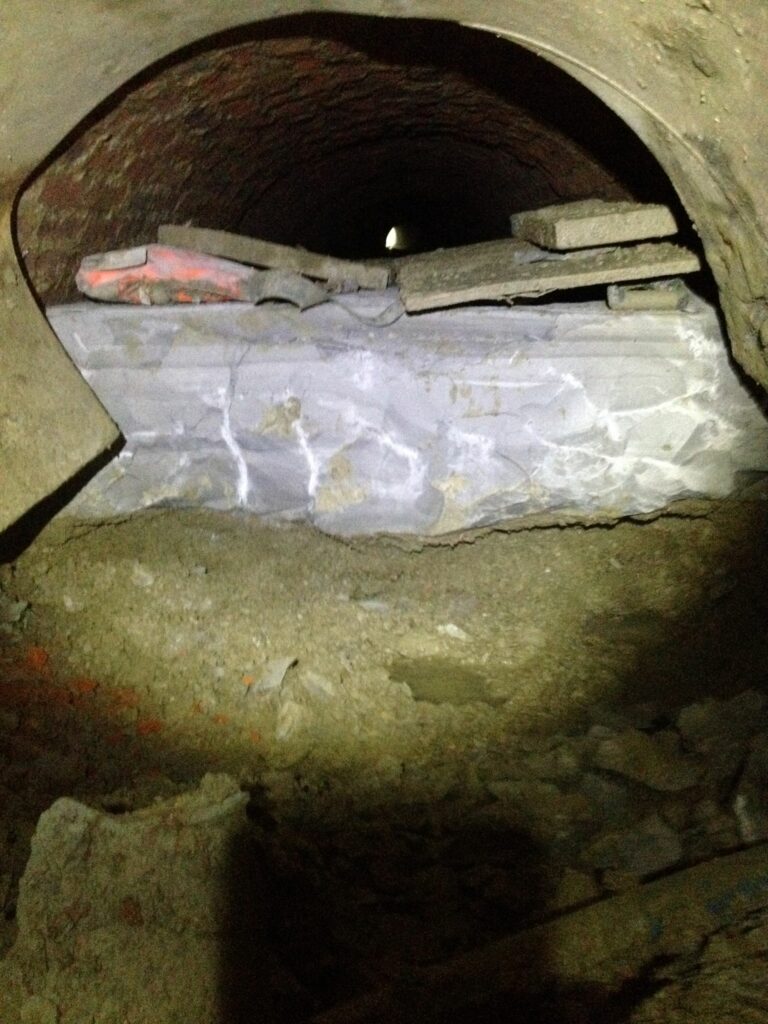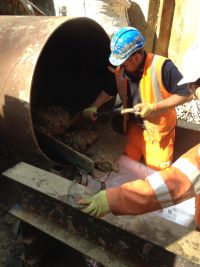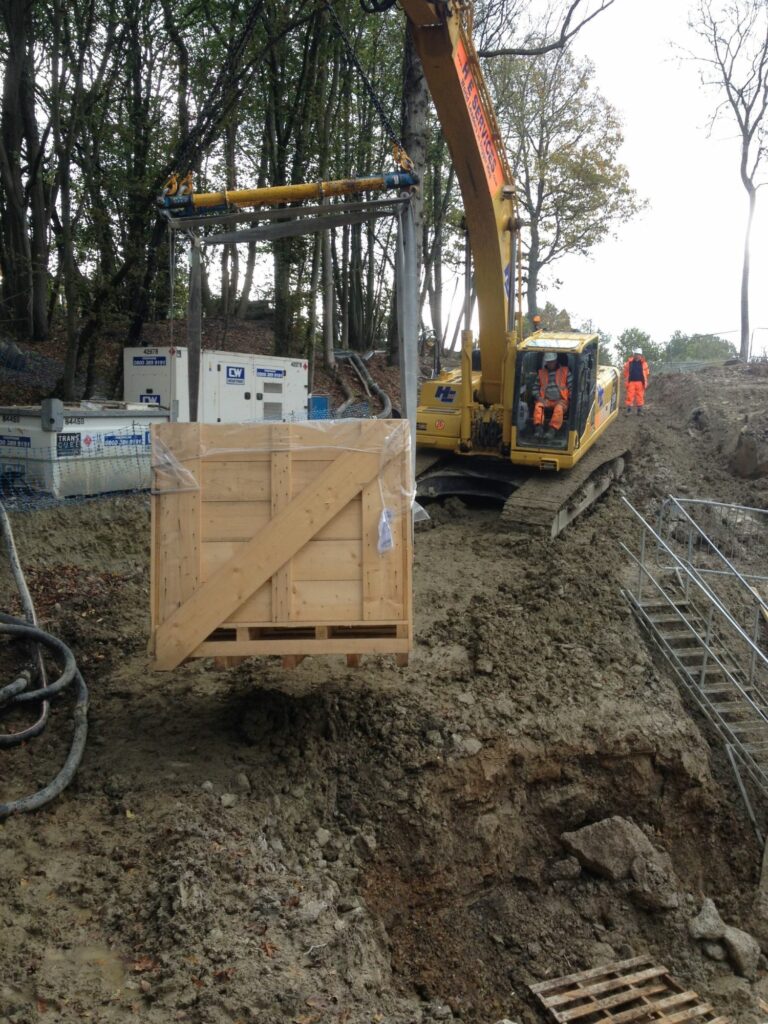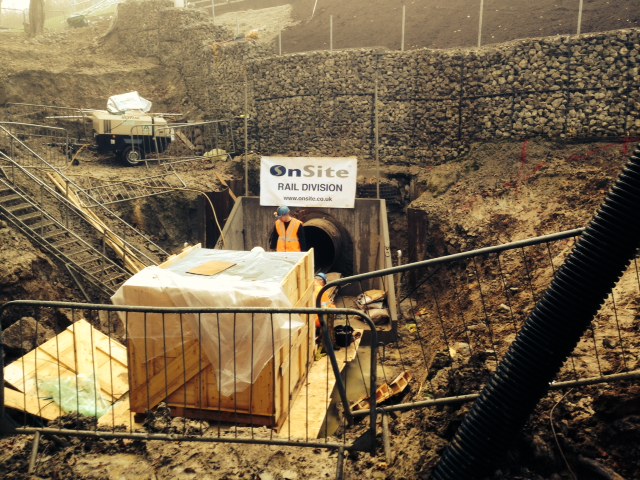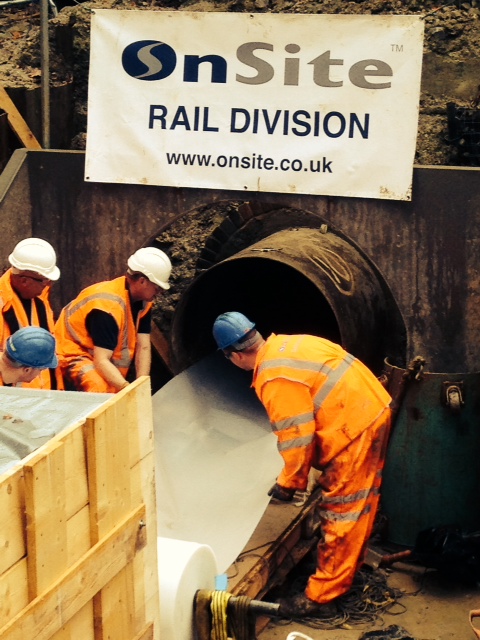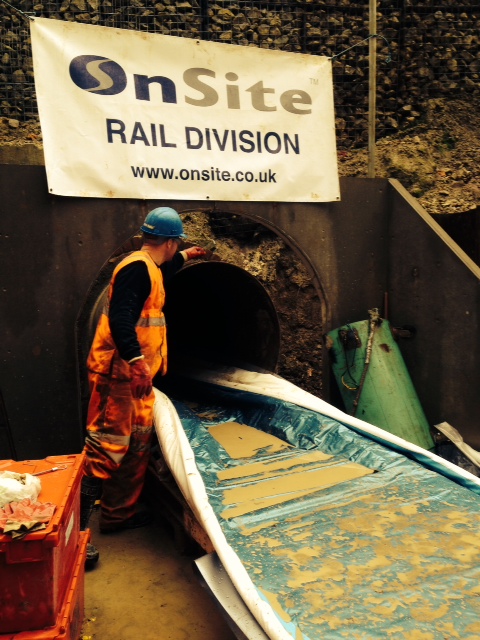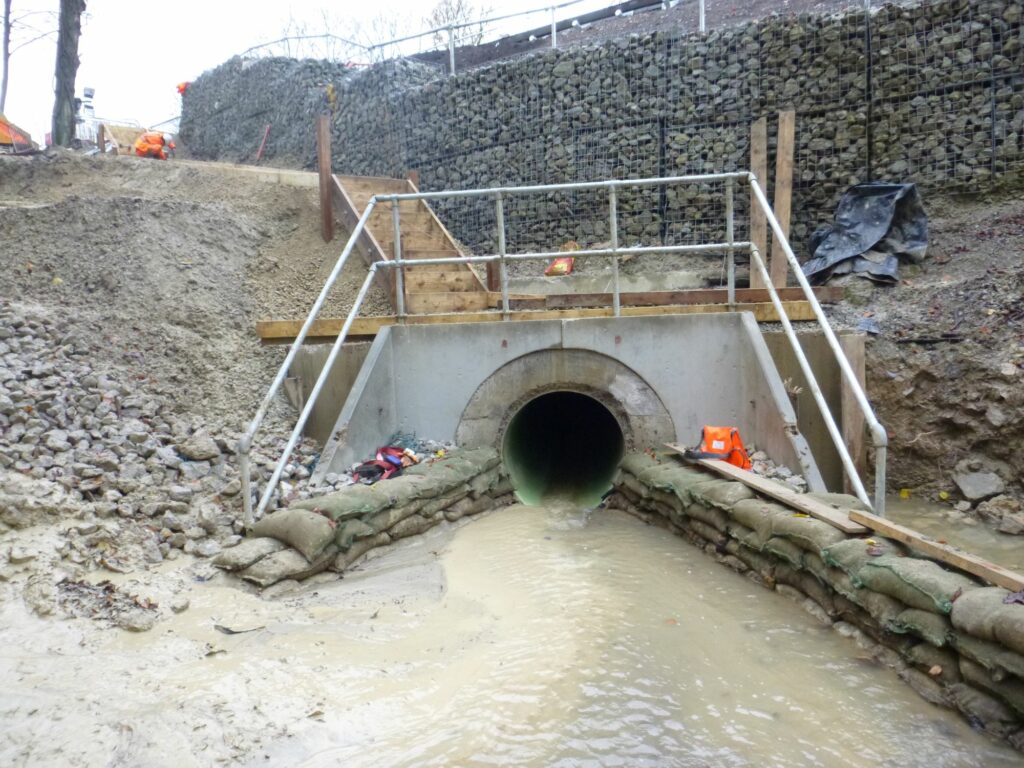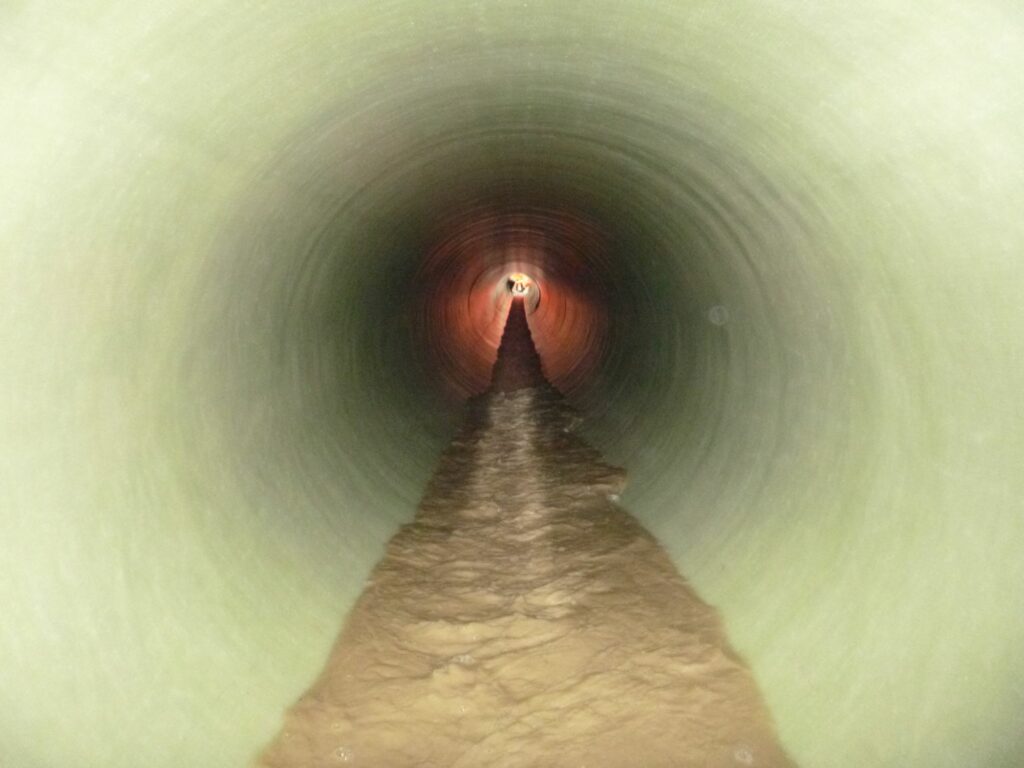OnSite Rail has recently celebrated its tenth anniversary, and the coming months are a great opportunity to tell its story, starting with a project that the team completed in the very early days.
In August 2014, OnSite Rail was called upon to complete pipe jacking and UV lining works to a culvert near Stonegate Station, Wadhurst.
During construction of a sheet pile retaining wall, the 1200mm culvert was breached at 4m by one of the sheet piles. The sheet pile was removed but the culvert suffered damage and the crown was falling in. A second breach of the culvert occurred when a ground anchor struck the top of the culvert, causing a partial collapse and filling the culvert with approximately 24 tonnes of grout.
The team assessed the works and agreed to jack a 1100mm sacrificial steel pipe through the culvert to support the damaged areas whilst allowing safe access for a confined space team to enter the pipework.
The steel sections of pipe were welded together on site and slowly jacked into the host pipe; debris was removed manually during the jacking process. A protective shield allowed the team to dig roughly one metre in front of the pipework removing the grout. The steel pipe was then inched forward, and the process continued.
When both breaches of the host pipe had been passed and all the grout was removed, the jacking was complete. A structural UV liner was installed through the full length of the steel pipe and the annulus was filled with grout to strengthen the structure once the sacrificial steel pipe erodes completely.
The team encountered several challenges during this project. The site was muddy and a fair distance from the nearest road, making it difficult to get plant and equipment to, especially in wet weather.
The grout in the pipe was rock hard and it was difficult to extract with only one person working on it in a 1100mm steel pipe, in hot and cramped conditions. The grout had to be pulled back by hand on trolleys and disposed of.
The logistics of getting a 65m long, 1100mm liner down to the culvert face was also a challenge due to the severity of the gradient on the access slope, combined with the weight of the liner. It took a very skilful driver and a slow, steady approach to arrive at the launch pad in front of the culvert, ready for installation.
The job was a long arduous process but ultimately, the team succeeded, and the works were completed two months later, in October 2014.
